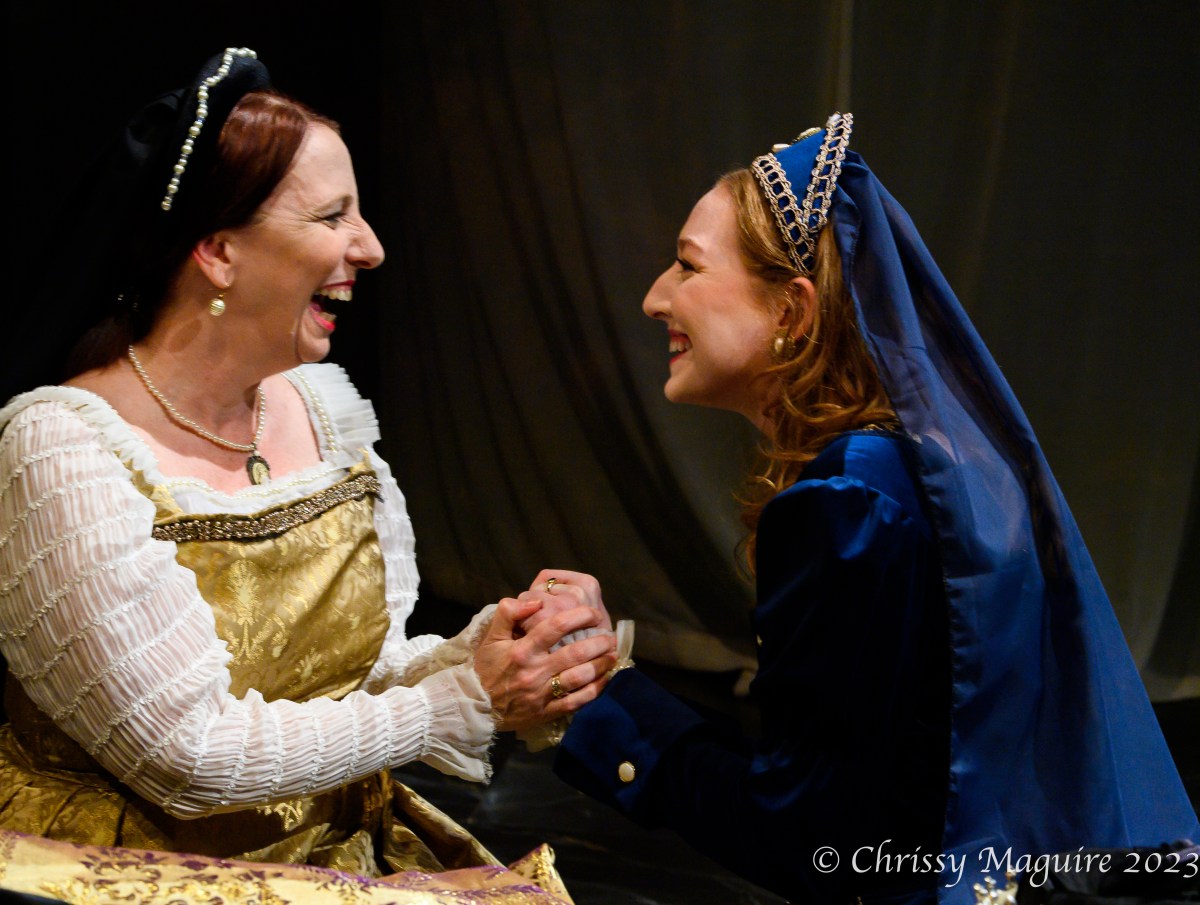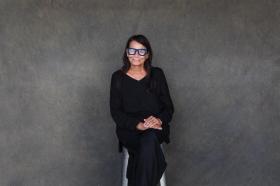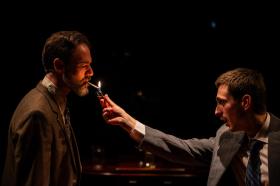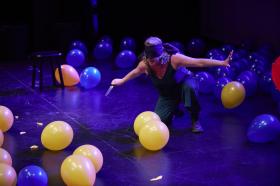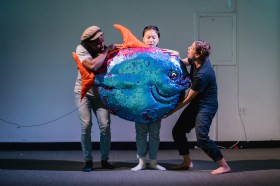You may be forgiven for thinking that the title of TheatreiNQ’s latest production was inspired by an alcoholic beverage or even a song from a Rodgers and Hammerstein musical; however, Bloody Mary is anything but.
This is a production that not only represents what has become traditionally excellent about this regional company (the work of which I have been reviewing for the past 11 years), but is also a significant personal achievement for Artistic Director, Terri Brabon. She is a consummate theatre artist, director, actor, composer and playwright – and this production clearly represents what enormous power there is to be derived from a solid classical theatre background.
It is always exciting to view new work and, in the wake of her recent adaptations of Shakespeare’s historical plays into a remarkable triptych, it makes perfect sense that Brabon would continue that fascination with England’s own Game of Thrones. She looks at one of history’s lesser known (and perhaps misunderstood) figures – Mary I, Henry VIII’s elder daughter and England’s first regent queen.
We all know about her younger sister, Elizabeth I, who ruled for more than 40 years, but to tackle the story of Mary is perhaps a more interesting challenge. This is particularly so when history nicknamed her ‘Bloody Mary’ for burning 286 Protestant religious dissenters at the stake in her relentless pursuit of returning England to the Catholic Church. Indeed, it could be argued that Mary I’s reign has resulted in the permanent decree that – even 500 years later – no Catholic can become a monarch of England.
It is all the more interesting in the light of the recent discovery of Richard III’s skeleton and exhumation from a Leicester car park only 11 years ago – and told in last year’s film The Lost King. This discovery led to a re-evaluation of Richard III and what has been described as ‘a Tudor myth’ that he was a usurper to the English crown and not a rightful king – cemented no doubt by Shakespeare’s depiction of him and influenced by historians of the time. Could it be that Mary I has been shrouded in a similar ‘Tudor myth’?
On one level, this play works as a depiction of historical fact, but Brabon’s intuitive writing and direction has delved much deeper to pose questions about Mary’s character, feelings and motivations. When one looks at the historical facts about Mary, it is easy to see that she could be portrayed as a victim. The daughter of Henry VIII’s first wife, Katherine of Aragon, she was doted upon by her father but, when he could not attain an annulment of the marriage, Mary was declared illegitimate, stripped of her title and exiled.
The action of the play covers all these historical facts – and more – and delivers a firm statement about history indeed being ‘the daughter of time’, asking the question whether that is actual fact, or only someone’s version of it?
On a human level, Brabon portrays Mary as a conflicted rather matronly figure, motivated by a zealous adherence to Catholicism, her relationship with her God and a consciousness of her mother. Playing a character plagued with ill health and a perpetual anxiety about her inability to produce an heir, Brabon gives a subtly inflected and affecting performance that conveys Mary’s sadness and predicament, while at the same time not making excuses for her harsh actions.
The historical aspects of the play are not depicted in a straightforward linear manner. Instead, Brabon uses various theatrical devices, the most effective being using younger versions of Mary (an impressive Emma Smith) in scenes that give us an understanding of situation, particularly her relationship with her capricious father, Henry VIII (played with commanding strength by Brendan O’Connor). What makes these scenes particularly stand out is that the climaxes are delivered directly to an older Mary, who up to this point has been unobserved by the other characters.
To provide comment on the action, and perhaps a direct link to the ‘Tudor myth’, Brabon also cleverly uses the device of Mary’s sister, the future Elizabeth I (played with an almost mischievous relish by Rachel Nutchey), as the link between play and audience.
Elizabeth is part commentator, part participant and part a somewhat cynical witness of her elder sister’s machinations and her own future as we have come to know it – at times breaking the fourth wall to offer humorous contemporary observations.
As dramatic as the story is, the play is not without its lighter moments, particularly the silent movie-like sequence where the story of Henry VIII and his six wives is told in fast forward fashion. And, of course, the TheatreiNQ ensemble is in strong evidence, portraying the variety of characters that contribute to the story.
There is impressive costuming by Kathy Brabon and Brendan O’Connor’s set design is simple yet effective – a set of scrim drapes with a central circular curtain, all of which change with sumptuous projections and played on a marble-esque black and white floor that glints under the light.
Such is the reputation of TheatreiNQ that the entire run almost sold out before the play opened. For those who do get the opportunity to see it, it will enthral in much the same way as the company’s versions of Shakespeare’s dramas do.
Bloody Mary
A TheatreiNQ production
Clubhouse Theatre, Queensland
Writer and Director: Terri Brabon
Stage Manager: Fionn Baker-Goodson
Lighting Designer: Daniel Lobley
Assistant Director: Emma Lamberton
Costume Designer: Kathy Brabone
Performers: Rachel Nutchey, Terri Brabon, Emma Smith, Brendan O’Connor, Belen Diaz, Keely Pronk, Paris Walsh, Bernie Lanigan, John Goodson, Michael Gleeson, Anna Vella-Sams, Michael Doris, Michael Sams, Nicholas Rose, Kaden Ramm, Lily Bartlett, Charlotte Davies, Ashleigh Dodson, Ally Armitage-Cosgrove, Lara Hodgson
Tickets: $30-$40
Bloody Mary will be performed until 22 April 2023.
